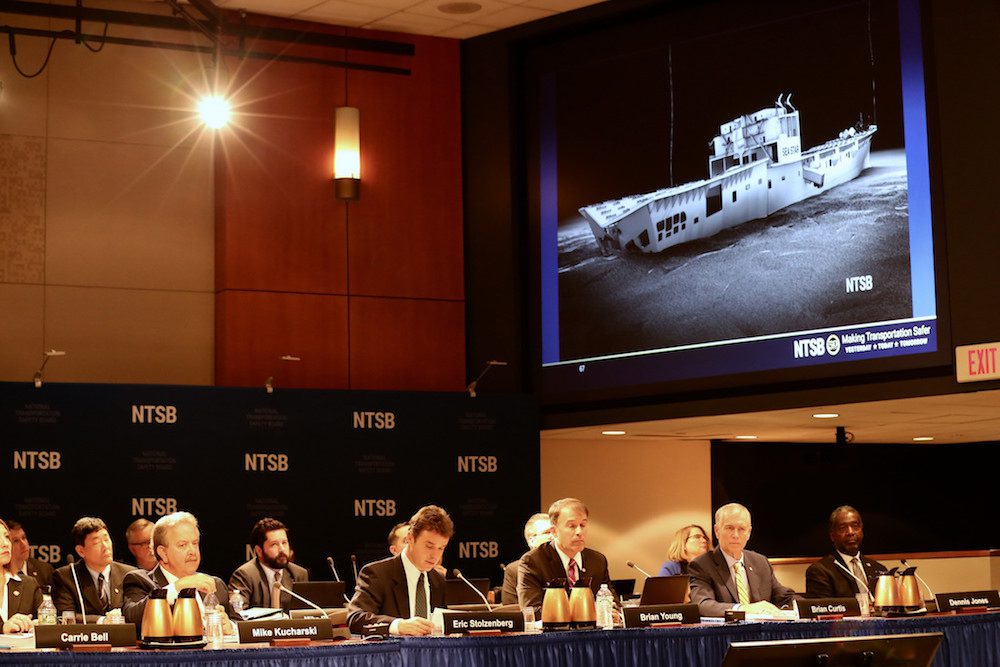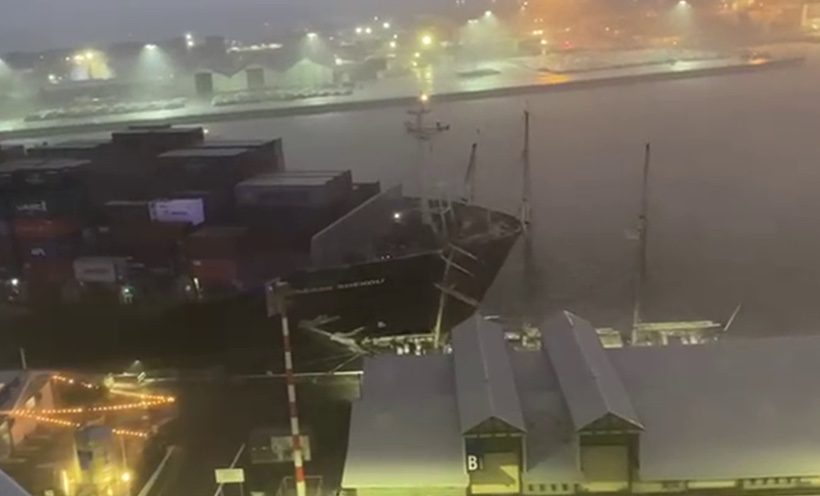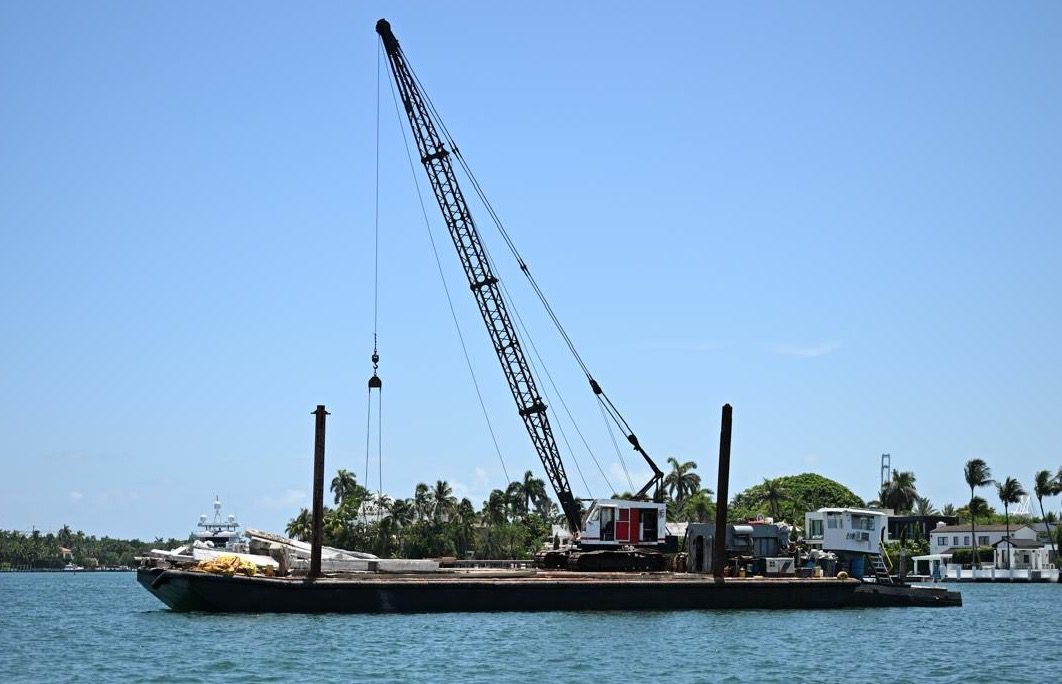Eric Stolzenberg, Naval Architecture Group Chairman presenting about the Flooding of Cargo Holds during the December 12, 2017 board meeting on the sinking of the S.S. El Faro.
The U.S. National Transportation Safety Board has released its final report on its investigation into the sinking of the American cargo ship SS El Faro on October 1, 2015 in the Atlantic Ocean.
Today’s release of the final report follows the NTSB’s meeting on December 12, 2017, to determine the probable cause of the sinking. On that date, the NTSB also adopted and released 81 findings and 53 safety recommendations from the investigation.
The US-flagged cargo ship SS El Faro was on a regular route from Jacksonville, Florida, to San Juan, Puerto Rico when it foundered and sank about 40 nautical miles northeast of Acklins and Crooked Island, Bahamas after sailing into the path of Hurricane Joaquin. All 33 people on board perished when the ship sank.
The 40-year-old SS El Faro was owned by TOTE Maritime Puerto Rico and operated by TOTE Services, Inc.
The loss of the vessel is the worst U.S. maritime disaster in terms of loss of life in over 30 years.
WATCH: NTSB Video Details El Faro Sinking
“The National Transportation Safety Board determines that the probable cause of the sinking of El Faro and the subsequent loss of life was the captain’s insufficient action to avoid Hurricane Joaquin, his failure to use the most current weather information, and his late decision to muster the crew,” the NTSB states in its Executive Summary.
“Contributing to the sinking was ineffective bridge resource management on board El Faro, which included the captain’s failure to adequately consider officers’ suggestions. Also contributing to the sinking was the inadequacy of both TOTE’s oversight and its safety management system. Further contributing factors to the loss of El Faro were flooding in a cargo hold from an undetected open watertight scuttle and damaged seawater piping; loss of propulsion due to low lube oil pressure to the main engine resulting from a sustained list; and subsequent downflooding through unsecured ventilation closures to the cargo holds. Also contributing to the loss of the vessel was the lack of an approved damage control plan that would have assisted the crew in recognizing the severity of the vessel’s condition and in responding to the emergency. Contributing to the loss of life was the lack of appropriate survival craft for the conditions,” the Execute Summary reads.
As part of its investigation, the National Transportation Safety Board (NTSB) led a joint effort with the US Navy, Woods Hole Oceanographic Institution, and the National Science Foundation to locate the ship’s wreckage and retrieve its voyage data recorder (VDR). The VDR was pulled from 15,250 feet below the ocean surface in August 2016 during the third undersea mission and yielded more than 26 hours of parametric data and audio files.
Related Reading: NTSB Determines Probable Cause of EL FARO Sinking
The NTSB investigation identified safety issues including the captain’s actions, use of noncurrent weather information, late decision to muster the crew, ineffective bridge resource management, inadequate company oversight, company’s safety management system, flooding in cargo holds, loss of propulsion, downflooding through ventilation closures, need for damage control plan, and lack of appropriate survival craft.
The NTSB made safety recommendations to the US Coast Guard; the Federal Communications Commission; the National Oceanic and Atmospheric Administration; the International Association of Classification Societies; the American Bureau of Shipping; Furuno Electric Company, Ltd.; and TOTE Services, Inc.
The full 282-page report can be downloaded on the NTSB website (opens as PDF in new tab).

 Join The Club
Join The Club










